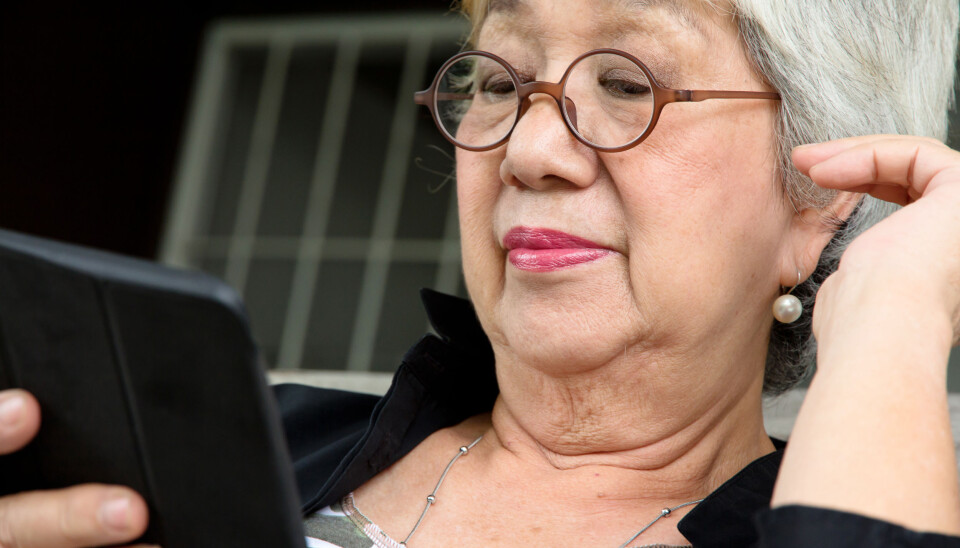THIS ARTICLE WAS PRODUCED AND FINANCED BY NORWEGIAN CENTRE FOR E-HEALTH RESEARCH - READ MORE

People prefer stories about people with diabetes to facts about the disease
Personal stories, often with video and emojis, were most liked and shared by the followers of the Norwegian Diabetes Association.
Patient organizations use social media to share information, talk to their followers. They want to build communities.
This may contribute to a better health and a better life for patients.
But what kind of content engages most users in social media? Funny stories or factual health advice? Texts, videos or photos?
“Several researchers have concluded that people benefit from participating in health groups on social media such as Facebook and Instagram. But, there are not many studies on what type of content people prefer. This is what I wanted to investigate,” says Elia Gabarron, researcher at the Norwegian Centre for E-health Research.
Analyzed 1449 posts
Together with colleagues, she conducted an observational study of content published on the Norwegian Diabetes Association's accounts on Facebook, Twitter and Instagram. The researchers analyzed messages posted between 2017 to 2019, a total of 1449 posts.
The association had more than 34,000 followers on Facebook, more than 7,000 on Instagram and around 3,000 on Twitter.
Gabarron's study was recently published in Journal of Medical Internet Research.
Seven categories
Half of the 1449 posts were published on the Norwegian Diabetes Association's Twitter account, 36 percent were posted on Facebook and 14 percent on Instagram.
The researchers documented the content of the posts. They described whether the posts had video or emojis, and how the messages had been liked, shared and commented on.
The posts were divided into seven categories, based on earlier studies:
- Health information, including self-management, self-monitoring, information about the illness and advice on physical activity.
- Research and innovation, including the results from one study on diabetes.
- Diabetes technology, such as information about apps, blood-glucose monitors and insulin pumps.
- Interviews and personal stories.
- Campaigns and awareness days.
- Information about food and recipes.
- Various information, like political topics, meetings and conferences.
Personal stories scored high
The analysis showed what type of content that engaged the most.
“The posts with interviews and personal stories received 111 percent more likes, 106 percent more comments and 112 percent more shares than posts about various subjects, such as politics,” Elia Gabarron says.
Posts about campaigns and awareness days also received a more positive response than other types of content.
Few likes for research
The posts about research were poorly received, and this made the researchers wonder. This was opposite of what they found in an earlier study.
“We conducted a study in 2018, where people with diabetes reported that they would like to see posts about research in social media. But, in our new study the opposite was a fact,” Gabarron says.
She thinks this might have to do with how people want to present themselves.
“Perhaps they want to stand out like a person who likes to read about research and innovation, whereas the truth is that they prefer stories about people's life experiences. And that is very understandable,” she says.
The users were more engaged on Facebook and Instagram.
In 2018, 80 percent of people in Norway aged 16-79 used social media, according to Statistics Norway.
Figures from Ipsos show that 69 percent use Facebook daily, 35 percent use Instagram while 9 percent use Twitter.
Liked videos
The users really liked video posts on the Norwegian Diabetes Association's social media accounts, according to the study.
“People were enthusiastic about interviews and personal stories. When these posts also had video and emojis, users became even more engaged,” Gabarron says.
Video posts were three times more likely to receive likes, four times more likely to receive comments, and two and a half times more likely to be shared.
With emojis, the posts increased their chance to be liked by 71 percent, and to be shared by 144 percent.
The results of the study shows that video and emojis increase the chances of engagement in social media. In addition, the researchers discovered a gap between what type of content people say they prefer, and what type of content they actually appreciate and like.
“This may indicate that how people behave in social media tells more about their preferences, than what they answer in a survey,” Elia Gabarron says.
Reference:
Elia Gabarron et al.: Factors Engaging Users of Diabetes Social Media Channels on Facebook, Twitter, and Instagram: Observational Study, J Med Internet Res, 2020. Doi: 10.2196/21204


































